
views
Pruning Oleander Annually

Prune in late summer or early fall. On the whole, oleanders are low-maintenance plants that don't need regular pruning. However, you should aim to do a major pruning of your oleander at least once a year during late summer or early fall. This pruning will help you shape your plant and stimulate healthy growth. Pruning at this time won't interfere with the blooming of the plant, because it is after the plant has already bloomed for the season. Don't prune past October. Pruning too late can make the recently cut sections of the plant vulnerable during winter.

Wear gloves. It's essential to wear gloves when you are pruning oleander. Oleander is poisonous, and while for the most part it's only dangerous when ingested, it can cause skin irritation and inflammation when handled. That is why it's best to wear gloves when pruning or handling the plant. You may also consider wearing goggles if you have sensitive skin or eyes. Be aware that the toxin in oleander is primarily in the sap of the plant.
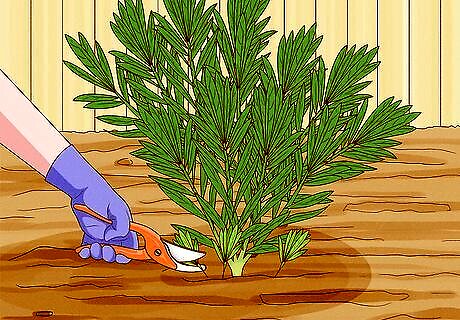
Snip off new shoots at the base of the plant. New shoots, also called suckers or basal shoots, are offshoots of the plant that grow up out of the base of the plant. Use sharp gardening shears to snip them as close to the base as you can. You can also dig up the dirt around the shoot and tear them out of the ground to remove them. These shoots can be harmful to the overall health of the plant because the plant will start to dedicate its energy into maintaining the shoot, rather than investing all its energy in the oleander.
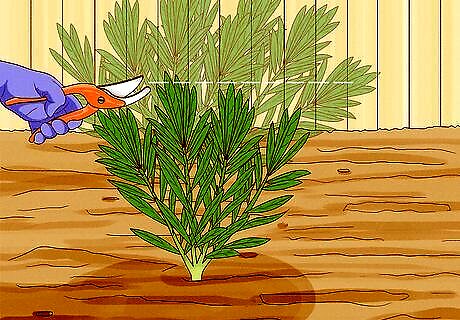
Cut oleander stems to about half height you'd like for the overall plant. If your oleander is too tall and its size is a problem, you will want to cut it down to size. Since pruning oleander actually encourages growth and branching, cut stems at half the desired height of the plant. For instance, if you'd like your oleander to be four feet tall, cut stems at two feet. Your oleander will continue to grow, and will reach four feet when the branches grow in. If your plant is more or less the size you'd like, you do not have to do any drastic cuts.
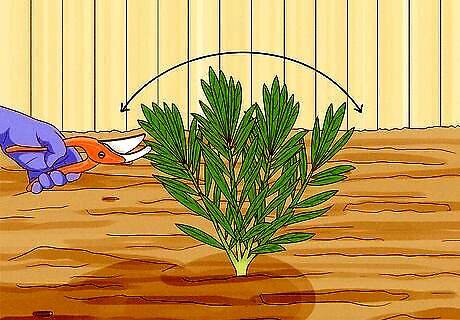
Shape your oleander. After cutting the stems to the desired heights, decide if you want to change the overall shape of the plant. When cutting branches, make your cut with sharp gardening shears just above the leaf nodes. The nodes are the sections where three leaves come out from the branch. Cutting just above the nodes encourages flowering. Your plant may have some scraggly or overhanging branches that distract from the natural shape of the plant. Cut these branches to emphasize the natural shape of the plant. You can also reshape the oleander into more of a tree-shape by cutting off branches near the bottom of the plant, leaving the area around the base clear.
Removing Dead Growths
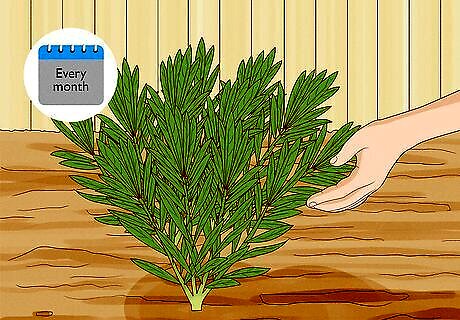
Check your plant every month or so for dead growths. Apart from your annual pruning, you should also prune here and there when you see dead or damaged branches or blooms. Especially if it's an old plant, or if it's exposed to pests, it will benefit from pruning to remove unhealthy sections.

Put on gloves. Even if you're just doing a few minor clips, still wear gloves when you are pruning oleander. Any kind of exposure can cause irritation, so even if you are just clipping a few branches, put on gloves and consider wearing long sleeves in case you brush up against the oleander.
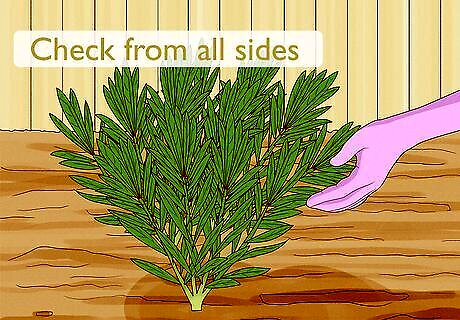
Look at your oleander plant up close and from all sides. Take note of any shoots or stalks that look dead. If it is a young oleander, you may not see any. However, the older and bigger the plant is, the more sections you will see that are past their prime.

Snip off damaged branches using sharp gardening shears. Use sharp gardening shears to cut off the dead or damaged branches of your oleander. Try to cut them a few inches below where the damaged section begins. If you don't cut off the entire damaged section, the branch won't be able to regrow in a healthy way.
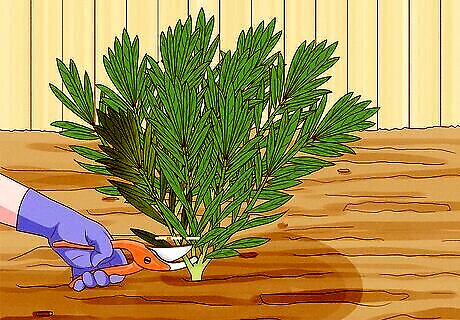
Cut entire damaged stalks close to the roots. If the oleander is not only damaged on its branches, but on the whole stalk, cut off the entire stalk. Oleander is an extremely resilient plant, so even cutting off an entire stalk won't hurt the plant. This stalk will regrow eventually, and will be bushier and healthier than ever!
Finishing Pruning
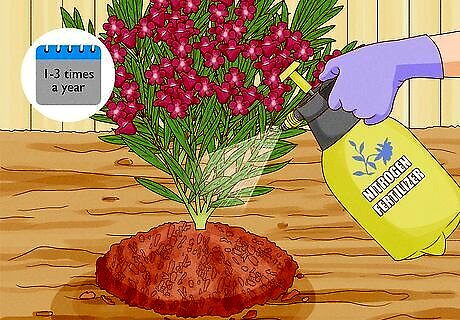
Fertilize the plant after pruning. You should aim to fertilize your oleander with a nitrogen fertilizer around one to three times a year, or not at all depending on the fertility of your soil. One of these times should be after your annual pruning of the plant. Your oleander will need the nutrients that fertilizer provides to regrow and blossom. Spread an even layer of fertilizer around the base of the plant. Fertilizer can be found at Home Depot, Lowe's or gardening stores.

Water the oleander. You should also water oleander after any pruning. Although oleander is a tough plant that is known for surviving in hot climates, watering the plant evenly can help its regrowth. Make sure not to drench the plant, as this can be more harmful than helpful.
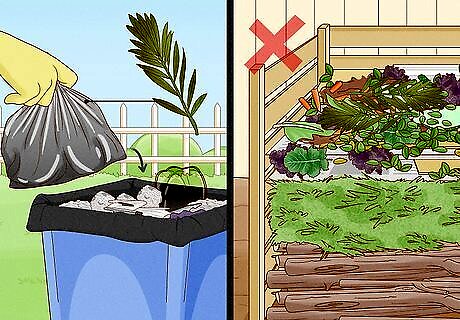
Dispose of the cuttings. Even just the clippings of oleander can be skin irritants if touched, or potentially harmful if ingested. Make sure to gather all the cuttings in a bag of some kind and dispose of them in a place where pets, children, or others won't be exposed to them. Wear your gloves as you collect the clippings. Do not compost any part of the oleander plant.
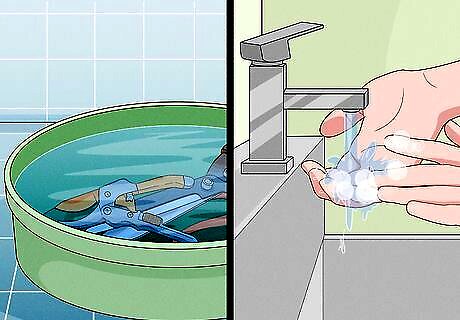
Wash your tools and your hands. After you have finished pruning, wash your gardening shears or any other equipment you used to trim your oleander. Washing your equipment ensures that the next time you use them you won't run the risk of skin irritation from the oleander sap. Even if you wore gloves, make sure to wash your hands as well as any exposed body parts, such as arms or legs.














Comments
0 comment